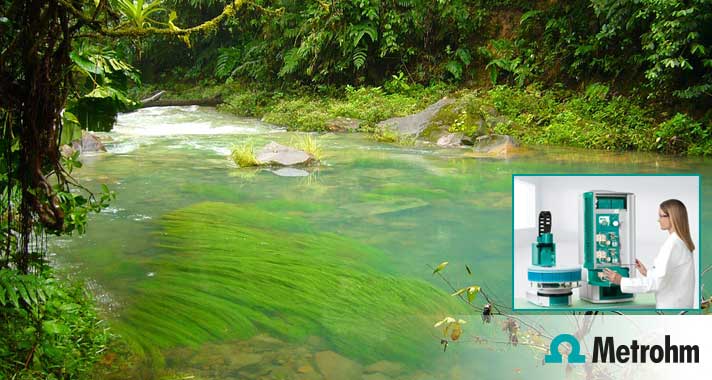Are our rivers as healthy as they look?
Generally speaking, hexavalent chromium or Cr(VI) is classified as allergenic, carcinogenic and extremely toxic, and is subject to strict monitoring. Cr(VI) can occur in various concentrations in different areas, e.g. drinking water, toys and textiles. Metrohm has developed ion chromatography determination methods for determining Cr(VI) in various concentration ranges (ng/L to mg/L) with inline sample preparation techniques for various matrices. More information on these applications is available from Metrohm.
Application I: determination of chromium(VI) in mineral and drinking water:
Metrohm has developed a highly sensitive ion chromatography method for the detection of Cr(VI), with a limit of determination of less than 0.02 µg/L Cr(VI). The application is also in compliance with the limit value required according to EPA Standard 218.7.
Application II: Cr(VI) in toys – determination by ion chromatography:
Metrohm has developed an ion chromatography method for this application that uses preconcentration and Inline Matrix Elimination. A portion of the migration solution produced in accordance with the regulation DIN EN 71-3:2014-12 is placed on a preconcentration column, where a rinsing solution is used to elute the matrix from the column. In the second step, chromatographic separation takes place on an anion exchanger. Detection is accomplished using a very specific post-column derivatization in combination with UV/VIS detection.
Application III: Cr(VI) in leather – determination by ion chromatography and Inline Dialysis:
Metrohm has developed an ion chromatography method for this application using Inline Dialysis for automatic sample preparation and UV/VIS detection following post-column reaction. Before injection of the sample on the separation column, the high-molecular compounds of the sample matrix are separated from Cr(VI) with Inline Dialysis. In the second step, chromatographic separation takes place on an anion exchanger. Detection is accomplished using a very specific post-column derivatization in combination with UV/VIS detection.









